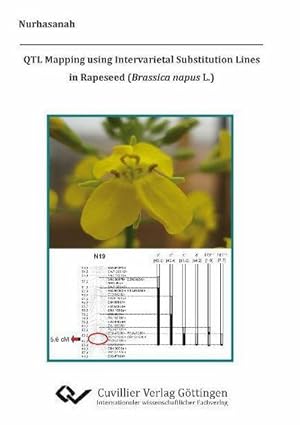Nurhanasah (3 results)
FeedbackSearch filters
Product Type
- All Product Types
- Books (3)
- Magazines & Periodicals (No further results match this refinement)
- Comics (No further results match this refinement)
- Sheet Music (No further results match this refinement)
- Art, Prints & Posters (No further results match this refinement)
- Photographs (No further results match this refinement)
- Maps (No further results match this refinement)
- Manuscripts & Paper Collectibles (No further results match this refinement)
Condition
- All Conditions
- New (3)
- Used (No further results match this refinement)
Binding
- All Bindings
- Hardcover (No further results match this refinement)
- Softcover (3)
Collectible Attributes
- First Edition (No further results match this refinement)
- Signed (No further results match this refinement)
- Dust Jacket (No further results match this refinement)
- Seller-Supplied Images (3)
- Not Print on Demand (No further results match this refinement)
Free Shipping
- Free Shipping to United Kingdom (No further results match this refinement)
Seller Rating
-
QTL Mapping using Intervarietal Substitution Lines in Rapeseed (Brassica napus L.)
Published by Cuvillier Nov 2010, 2010
ISBN 10: 3869555416 ISBN 13: 9783869555416
Seller: BuchWeltWeit Ludwig Meier e.K., Bergisch Gladbach, Germany
Taschenbuch. Condition: Neu. This item is printed on demand - it takes 3-4 days longer - Neuware -Intervarietal substitution lines (ISLs) having one or a few defined segments of a donor genome in the common genetic background of a recurrent parent can be used to search the genome for donor alleles affecting traits. A complementary set of substitution lines represents ideally the whole donor genome divided into a limited number of distinct segments, each carried by a different line. ISLs were suggested as an alternative to a segregating population for QTL mapping. An ISL population can be used to overcome the limitations of a segregating population in the accuracy of QTL localization. With overlapping donor segments in different substitution lines and their respective phenotypic values, QTL positions can be narrowed down to a few centimorgan (cM), allowing a high precision of QTL localization.The main objectives of this study were: - To develop set of intervarietal substitution lines (ISL) from the cross of ¿Express¿ x resynthesized line ¿RS239¿; - To map QTL for some agronomically important traits in two sets of ISL populations developed from the crosses of ¿Mansholt¿ x ¿Samourai¿ and ¿Express¿ x resynthesized line ¿RS239¿; - To compare QTL results mapped in the ISL population with QTL mapped in an earlier generation (F1DH population) developed from the cross ¿Mansholt¿ x ¿Samourai¿; For this, a set of ISLs was developed from a cross between the spring type resynthesized rapeseed line ¿RS239¿ and the winter rapeseed variety ¿Express¿ (¿ExRS239¿). A second set, developed from a cross between doubled haploid lines of the two winter rapeseed varieties ¿Mansholt¿ and ¿Samourai (¿MxS¿), was available from earlier work. The ISLs were developed through five backcross generations. Using marker assisted selection with AFLP markers, lines carrying a complementary set of donor segments were selected. 122 pp. Englisch.
-
QTL Mapping using Intervarietal Substitution Lines in Rapeseed (Brassica napus L.)
Published by Cuvillier
ISBN 10: 3869555416 ISBN 13: 9783869555416
Seller: AHA-BUCH GmbH, Einbeck, Germany
Taschenbuch. Condition: Neu. nach der Bestellung gedruckt Neuware - Printed after ordering - Intervarietal substitution lines (ISLs) having one or a few defined segments of a donor genome in the common genetic background of a recurrent parent can be used to search the genome for donor alleles affecting traits. A complementary set of substitution lines represents ideally the whole donor genome divided into a limited number of distinct segments, each carried by a different line. ISLs were suggested as an alternative to a segregating population for QTL mapping. An ISL population can be used to overcome the limitations of a segregating population in the accuracy of QTL localization. With overlapping donor segments in different substitution lines and their respective phenotypic values, QTL positions can be narrowed down to a few centimorgan (cM), allowing a high precision of QTL localization.The main objectives of this study were: - To develop set of intervarietal substitution lines (ISL) from the cross of ¿Express¿ x resynthesized line ¿RS239¿; - To map QTL for some agronomically important traits in two sets of ISL populations developed from the crosses of ¿Mansholt¿ x ¿Samourai¿ and ¿Express¿ x resynthesized line ¿RS239¿; - To compare QTL results mapped in the ISL population with QTL mapped in an earlier generation (F1DH population) developed from the cross ¿Mansholt¿ x ¿Samourai¿; For this, a set of ISLs was developed from a cross between the spring type resynthesized rapeseed line ¿RS239¿ and the winter rapeseed variety ¿Express¿ (¿ExRS239¿). A second set, developed from a cross between doubled haploid lines of the two winter rapeseed varieties ¿Mansholt¿ and ¿Samourai (¿MxS¿), was available from earlier work. The ISLs were developed through five backcross generations. Using marker assisted selection with AFLP markers, lines carrying a complementary set of donor segments were selected.
-
QTL Mapping using Intervarietal Substitution Lines in Rapeseed (Brassica napus L.)
Published by Cuvillier Verlag, 2010
ISBN 10: 3869555416 ISBN 13: 9783869555416
Seller: moluna, Greven, Germany
Condition: New. Dieser Artikel ist ein Print on Demand Artikel und wird nach Ihrer Bestellung fuer Sie gedruckt. KlappentextrnrnIntervarietal substitution lines (ISLs) having one or a few defined segments of a donor genome in the common genetic background of a recurrent parent can be used to search the genome for donor alleles affecting traits. A complemen.




